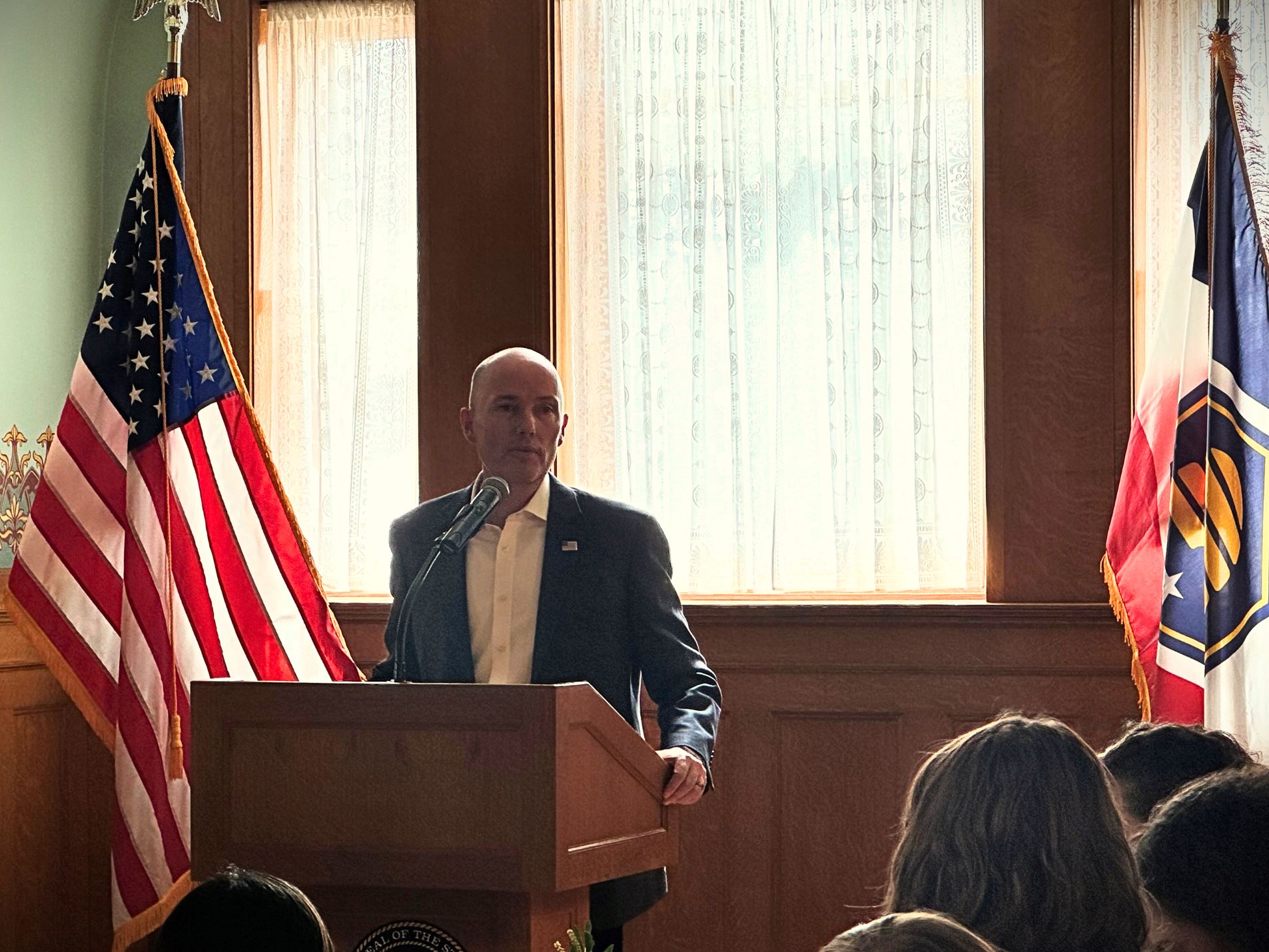Good morning, Mr. Chairman and members of the Subcommittee. I am Ruth Ann Minner, Governor of the State of Delaware, and am here today representing the National Governors Association. I currently serve as a member of the NGA’s Committee on Natural Resources; we appreciate the opportunity to provide testimony today on Brownfields issues. I have attached a copy of the NGA policy statement on Superfund reform and ask that it be included in the record of this hearing, along with my statement.
The Governors believe that brownfields revitalization is critical to the successful redevelopment of many contaminated former industrial properties. In fact, it is a vital part of the smart growth agendas being pursued by many Governors this year, including my own “Livable Delaware” plan. Therefore, we commend the Subcommittee for focusing on the brownfields issue so early in this session. We agree with you that passage of brownfields legislation should be a priority for this Congress, but it must be legislation that encourages actual cleanup of the sites.
Brownfields represent an enormous potential economic development resource, one that can lead to new jobs, healthier neighborhoods, increased local tax revenues, and less suburban sprawl. Some have called brownfields the “engines of the New Economy.” Successful state brownfields programs improve the quality of life for a community, which in turn, increases that community’s economic competitiveness and helps it attract new business and workers. State brownfields programs have been operating now for about a decade. In that short period, state programs have successfully facilitated reuse of more than 40,000 sites. For example, New Jersey, under the leadership of former Governor, now-Administrator Whitman, led an effort to provide funding to reimburse brownfields developers up to 75 percent of remediation and cleanup costs, and in her last budget as Governor, she signed legislation to award $15 million in grants to municipalities to acquire and clean up brownfields sites. Michigan passed a bond issue that devotes $335 million to prepare brownfields sites for redevelopment, including grants and loans to municipalities and counties. Massachusetts provides brownfields tax credits ranging from 25 – 50 percent for owners who pursue site cleanups in economically distressed areas.
In my state of Delaware, brownfields account for nearly 25 percent of the land in our largest city, Wilmington. In 1995, we established several financial incentives for brownfield redevelopment and initiated a number of reforms to our state Superfund law. We provide a 50-50 matching grant of up to $25,000 for the state share from our economic development strategic fund to cover the cost of environmental assessment. We also offer low-interest loans for site cleanup and offer a Blue Collar Job Creation and Capital Investment Tax Credit for redeveloping brownfields. Perhaps most importantly, our state law, which has a liability scheme identical to that in the federal Superfund Act, provides liability relief for prospective purchasers of brownfields sites that have gone through the state cleanup process and have been issued a Certificate of Completion of Remedy.
But there are still challenges states face in redeveloping brownfields, real and perceived barriers that are keeping us from eliminating these blights on many of our communities. In Delaware, we believe that the package of incentives and limited liability relief I’ve described are examples of the flexibility that should be recognized, and not impeded, under federal law to stimulate brownfields redevelopment.
State level creativity and innovation in meeting their brownfields needs has been the hallmark of redeveloping many industrial sites. But there are many more sites in Delaware and thousands more across this nation that need to be addressed. We think the federal government can help remove some of the impediments to their redevelopment.
Owners of contaminated industrial sites often desire site cleanup in order to sell the property and return it to productive use. State brownfields programs allow redevelopment to take place at these sites quickly, with appropriate cleanup standards, and with minimal government involvement. However, some developers are afraid that their involvement in these state-managed sites may result in environmental cleanup liability for contamination they did not create, under, the Comprehensive Environmental Response, Compensation, and Liability Act (CERCLA) of 1980, commonly referred to as “Superfund.” As a result, valuable industrial land remains contaminated, unused, or abandoned, denying communities economic activity and the direct benefits of jobs and taxes. Many potential developers of brownfields sites have been deterred from investing in a contaminated site. That is because they know that even if the state is completely satisfied that the property has been properly cleaned up, there is the potential for EPA to take action against the cooperating party under the CERCLA liability scheme.
If there is legislation on brownfields, Governors believe that it should address this problem by providing needed liability protections for innocent owners and owners of property contiguous to contaminated sites. Just as importantly, legislation should preclude enforcement by anyone (other than by a state) at sites where cleanup has already occurred or is being conducted under state programs. This “finality” should mean what it says – satisfactory completion of a cleanup under state law should be final. To not give this assurance to developers who are spending thousands, or hundreds of thousands, of dollars of their own money to rehabilitate a property reduces the chances that the rehabilitation will happen.
We do not disagree with those that want exceptions to this finality, but the exceptions should be limited and should give states an adequate opportunity to take appropriate action themselves before EPA is permitted to reopen the cleanup and take an enforcement action against the owner or the developer.
For example, we do not think that EPA’s mere assertion that a potential release of a contaminant from a brownfields site “may present an imminent and substantial endangerment to public health or welfare or the environment” should be sufficient to override the state’s approval of the cleanup and begin an enforcement action. Such language does not assure that the problem is taken care of; it just brings the federal government into the picture and scares away future developers from cleaning up other sites.
What the Governors would strongly recommend is language that at brownfields sites, the burden should be on EPA to show that the Governor was notified and given an reasonable opportunity to correct the problem, or threat of the problem, and was unwilling or unable to take appropriate action. Of course, if EPA needed to take emergency action to protect public health or the environment, and the state was unwilling to respond, intervention by the federal government might be appropriate. Similarly, a state could ask for federal assistance in cleaning up any site if the circumstances warrant it.
Another provision that we believe is very important in any bill that addresses contaminated sites is a provision to require the concurrence of the Governor of a state in which a site is located before a site may be added to the National Priority List. The nation’s Governors believe such a provision is vital. It is currently EPA policy to seek the concurrence of a governor before listing a site, and we ask that you codify this practice.
We also would like to see a section of CERCLA clarified regarding the state cost share at Superfund sites. The Governors believe that the law should clearly provide that the Superfund response trust fund can be used to support operation and maintenance activities at the same state match requirements as cleanup actions – that is, a 10 percent cost share.
Lastly, we would like to see a bill that includes a waiver of sovereign immunity for federal facilities, so that states can enforce state environmental laws. Such authority has been provided in the Clean Water Act, the Clean Air Act, and the Resource Conservation and Recovery Act. Congress confirmed its commitment to state enforcement of environmental laws at federal facilities in 1992 under the Federal Facility Compliance Act, but the authority under the Superfund law is less clear. States seek clear authority to require and oversee response activities at federal facilities. As you may know, federal facilities and former federal facilities are among the worst contaminated sites in the nation. We seek to hold the federal government to the same standard of compliance as other parties in our states.
We appreciate your consideration of our views, and we look forward to working with you on the development of brownfields legislation during this session.












